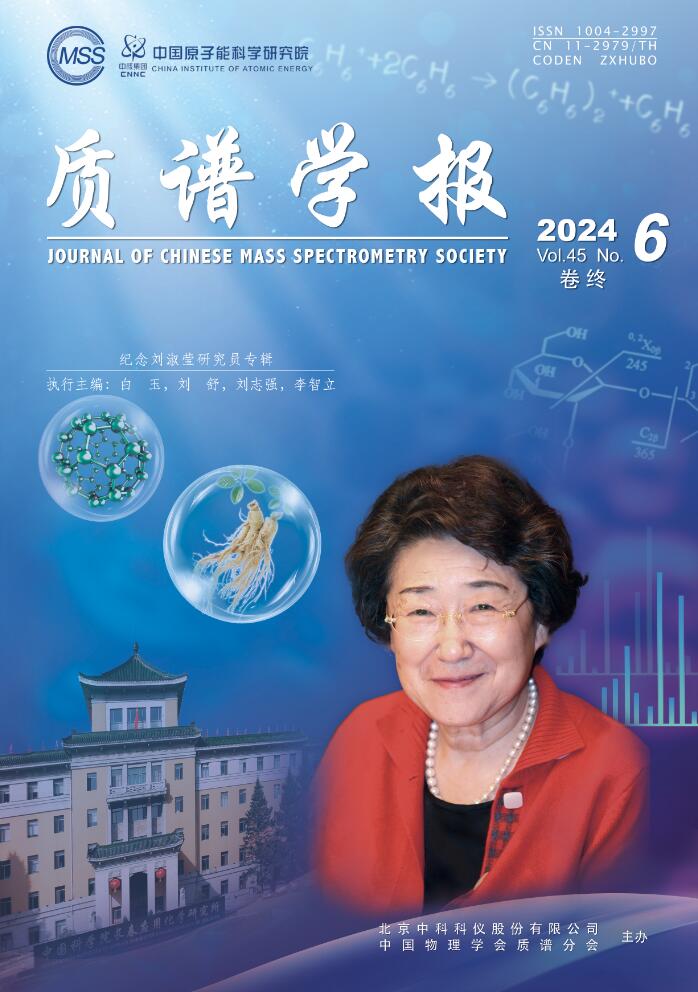来源期刊
质谱学报
Physics and Astronomy-Atomic and Molecular Physics, and Optics
期刊介绍:
Journal of Chinese Mass Spectrometry Society, founded in 1980, is a bimonthly academic journal under the supervision of the Chinese Academy of Sciences, organised by the Mass Spectrometry Branch of the Chinese Physical Society, Beijing Zhongke Keyi Technology Development Co, Ltd, and hosted by the China Institute of Atomic Energy Science. The journal mainly publishes new theories, methods and techniques of mass spectrometry in basic disciplines such as physics, chemistry, biochemistry, material science, nuclear science, earth science, life science and its application research results in various fields, and at the same time, it introduces the latest progress of mass spectrometry and its related technologies in the research of the above mentioned frontier subjects, and demonstrates the mass spectrometry technology in agriculture, petroleum, geology, medicine, chemical industry, clinical medicine, bioengineering, It also presents the research results of mass spectrometry in agriculture, petroleum, geology, pharmaceuticals, chemical industry, clinical medicine, bioengineering, atomic energy, isotope analysis, environmental monitoring, food quality control, material analysis, public security and justice, military departments, and other fields of national economy.
The journal has been published by EI, Scopus, DOAJ, Chinese Core Journals, China Science and Technology Paper Statistical Source Journals (China Science and Technology Core Journals), China Science Citation Database (CSCD), World Impact Index of Science and Technology Journals (WJCI), Chemical Abstracts of the United States (CA), Japan Science and Technology Agency (JST), Russian Abstracts Magazine (Pж(AJ)), Analytical Abstracts, Chinese Academic Journals, and Chinese Academic Journal of the United States (CJJ). Analytical Abstracts, China Academic Journal Comprehensive Evaluation Database (CAJCED), China Journal Full Text Database (CJFD), China Academic Journals (CD-ROM), Chinese Science and Technology Journal Database, National Abstracts of Inorganic and Analytical Chemistry (NACAC), Founder's Apabi e-journals, Superstar Journals Database, etc., and has been included in the network of ‘Wanfang Data-Digital Journal Group’, Taiwan Chinese electronic journals. It has also been included in ‘Wanfang Data-Digital Journal Group’, Chinese Electronic Periodical Service in Taiwan-CEPS, Chongqing Wipu Science and Technology Journal Database, and Shusheng Digital Journals.
期刊最新文献
Coupling Paternò-Büchi Reaction with Ambient NanoESI-MS for Identification of Unsaturated Triacylglycerols in Peanut Oils
Exploration of the Soft Ionization Performance of Paper Spray Mass Spectrometry
Studies on Fragmentation Characteristics of Fentanyl-TypeNew Psychoactive Substances Using Dielectric Barrier Discharge Ionization Mass Spectrometry
Mass Spectrometry Behavior of Pyrethroid Pesticides in NCI and EI Sources
Determination of Serum Growth Hormone by Liquid Chromatography-Isotope Dilution Mass Spectrometry


